 



Why haven't I been online? Where have I been? Just working, mostly. Here's a photograph of the office on a cloudy day... 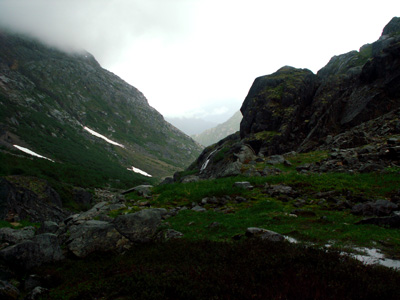 It was one of my last patrols of the Chilkoot for the year. Another patrol of looking after the park's resources in the high country and helping each hiker to safely make it over the pass and into Canada. The 'highlight' of this shift was that it was wet. Over three inches of water fell in three days, nearly shutting down the trail. It made for waist-deep glacially-cold river crossings for those intrepid enough to try them... 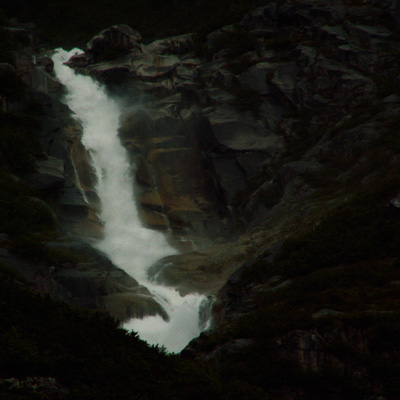 ...created even lovelier-than-normal waterfalls... 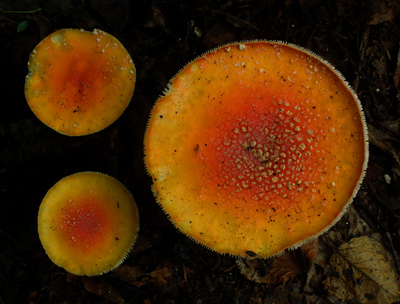 ...made the mushrooms beautiful... 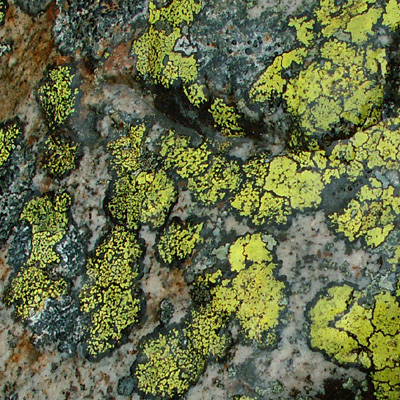 ...and made the lichen shine on the slick rocks. This shift was also different in another, more exciting way. While I wasn't hired to be a trail ranger here, I pull a shift now and then to fill in when the need arises. However, I rarely walk the average shift of a standard trail ranger, who probably goes an average of fifty-five miles in eight days. (This shift, however, I hiked just over fifty-five miles.) At the conclusion of a normal shift I typically walk the thirteen miles back to my house, which lies near the base of the trail near the old gold rush town of Dyea (once a town of eight thousand, but now nearly a ghost town, save for the thirty-five or so people such as myself who still live in the area). But this shift I had the pleasure of leaving to the north, through British Columbia... a twenty-one mile walk that, surprisingly enough, I'd never done during the four years that I've lived and worked here. 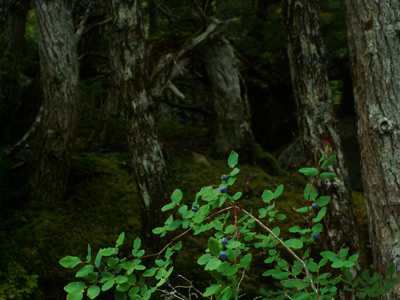 The trail begins in the temperate rain forest at the head of the Lynn Canal... 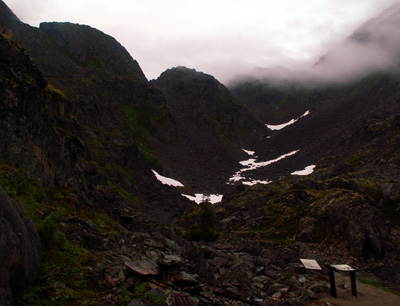 ...and climbs above tree line to the infamous Chilkoot Pass. To be honest (and it's not exactly a secret), I'm not overfond of climbing to the top of the pass. It's a one thousand foot (300m) climb made in a mere half mile (0.8 km) in a boulder field with an average grade of 35-45%. In other words, at many points along the route you can stand straight up, stretch your arm out in front of you, and still be touching the trail. Fortunately, it's more of a non-technical rock climb than a slippery slope, and on this trip, I only had to go up it. Normally I end up having to descend it as well, which is the part I despise most. This summer I've finally also learned the secret to happiness on the Golden Stairs--leather gloves--which make negotiating the rocks far, far easier. 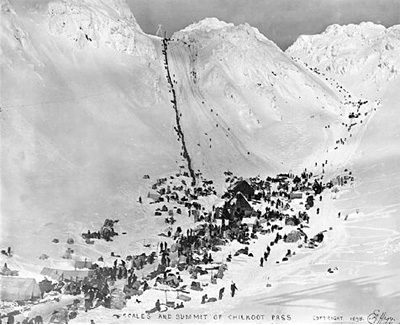
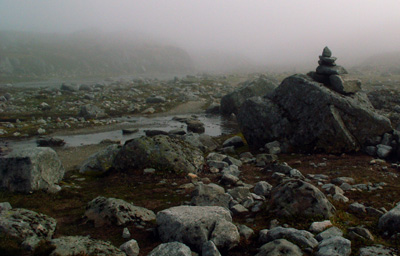 Once over the pass, you find yourself at the headwaters of the Yukon River. In the day, stampeders would make their way on foot only as far as necessary before building a boat, waiting for the spring thaw, and floating the rest of the way to the Klondike (you can read a detailed history here). It sounds easier than it was, as many were far from experienced outdoorsmen who'd never even thought of building a boat before. Tens of thousands registered their names with the Royal Canadian Mounted Police at the Chilkoot Pass, but hundreds less checked in with the mounties in Dawson City, and while some of them may have abandoned the trip and gone home, a great many of them likely died negotiating the difficult rapids of Miles Canyon or Five Finger Rapids, in avalanches, or perished of one of the other common causes along the trail: hypothermia, malnutrition, disease, murder, suicide, or--as some stampeders have said--heartbreak. 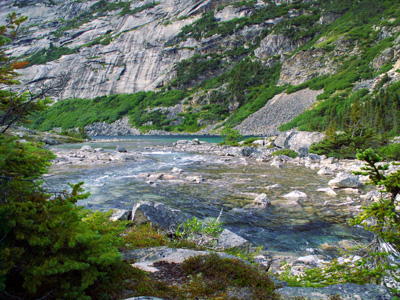 But enough about death! The trail today is far easier, less expensive, and more fun to negotiate. It allows you to see the natural beauty and wonder at the stories of those who've come before in relative comfort. 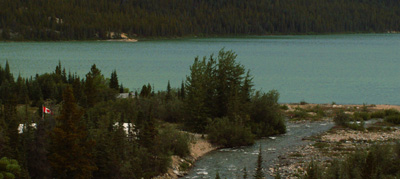 Of course, my hiking partner and I had even more comfort than the average hiker, as we stayed in ranger and warden stations along the way, with food and shelter provided for us, which greatly lightened our loads. In the above photograph, if you look closely, you can make out the tiny Canadian flag which flies over the warden station at Lindeman City. 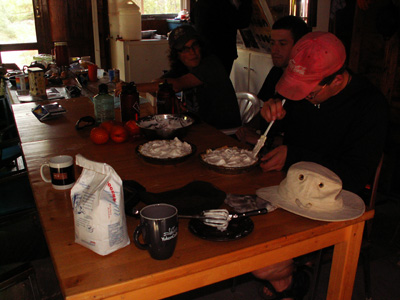 Staying with Parks Canada staff at Lindeman meant reuniting with friends, making new acquaintances, and eating lemon meringue pies. 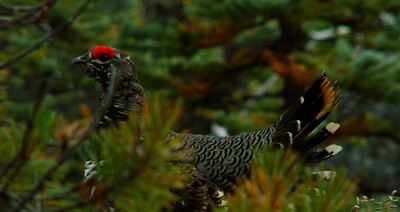 We encountered no bears during our hike, only a toad, several squirrels, and this lovely grouse. 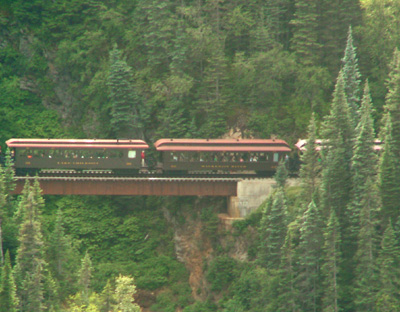 Upon arriving at Bennett, we took the train back to Skagway. I only spent a couple of days at home, however, before taking off on another adventure, this time well into the Yukon, which you can read about in the next photography essay.
|
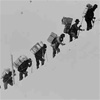 I shouldn't complain too much... a century ago it was climbed by thousands of people wearing non-ergonomic packs that were far heavier than my own, and after each ascent, most of whom did it in the cold of winter, they would slide back down to the bottom to get the next load. Forty to fifty trips, all in the hope that they would have enough food and gear to survive a winter in the Yukon and strike it rich in the Klondike gold fields, five hundred miles (800 km) distant.
I shouldn't complain too much... a century ago it was climbed by thousands of people wearing non-ergonomic packs that were far heavier than my own, and after each ascent, most of whom did it in the cold of winter, they would slide back down to the bottom to get the next load. Forty to fifty trips, all in the hope that they would have enough food and gear to survive a winter in the Yukon and strike it rich in the Klondike gold fields, five hundred miles (800 km) distant.